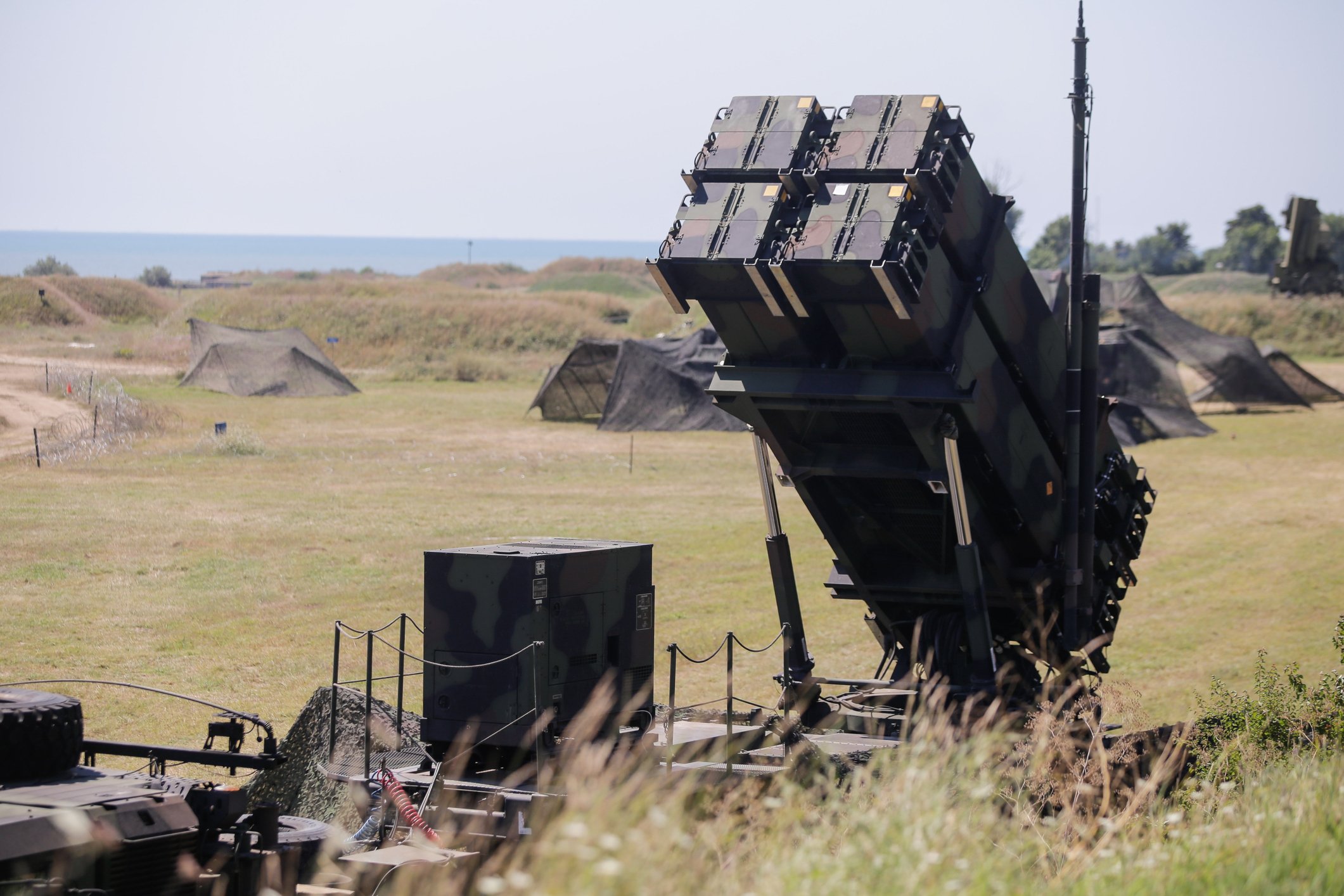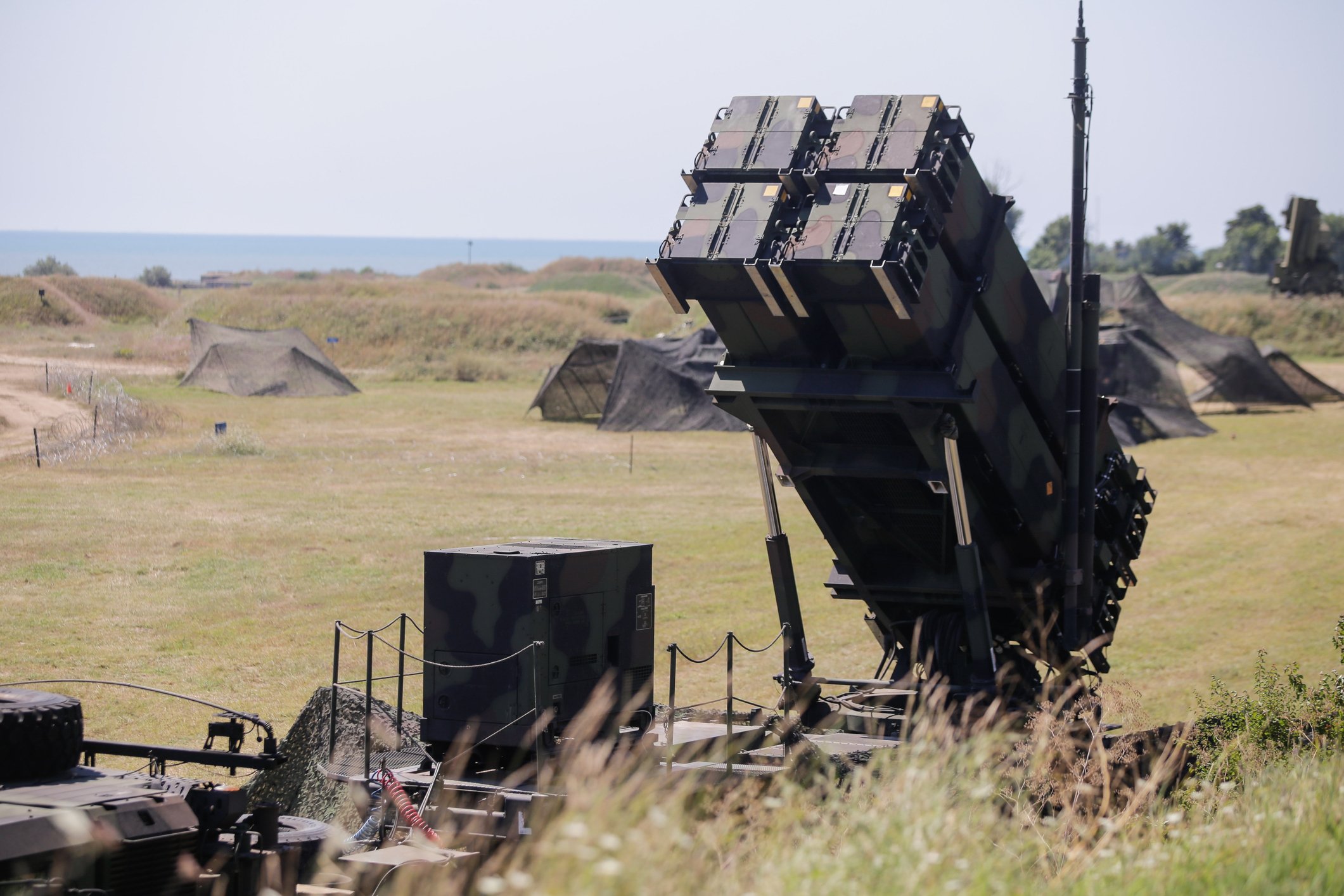The last decade for defense stocks has been a tail of two halves, with the sector boxed in early in the 2010s by a divided government that led to partisan budget battles and ultimately to restrictions on government spending. During this time, the Pentagon was fighting multiple battles in the Middle East, which consumed much of the Defense Department's attention and capital and ate into spending on more lucrative research and development work.
That all changed in 2016, when Washington, under single-party control, was able to end sequestration and agree to a two-year budget deal that opened the spigots. In the latter years of the decade, the Pentagon and other government agencies were focused on making up for lost time and funding modernization of IT systems and the nuclear triad while also exploring new technologies and more advanced weapons systems.

Image source: Getty Images.
Through the ups and downs, much of the defense industry came out ahead of the S&P 500's 186% return for the decade, but a few stocks stood out as true outperformers. Here's a look at the top defense stocks of the decade.
A few notes on how the list was formed:
- Only companies that have been around and publicly traded since Dec. 31, 2009, were considered, although I did include companies like L3Harris Technologies, which began the decade as Harris Corp. but expanded and changed its name and ticker via acquisition.
- I also excluded companies that operate in the defense sector but do not generate at least half of total revenue from defense sales. That meant excluding companies like Boeing, TransDigm Group, and Heico who produced blockbuster returns during the decade, but did so largely thanks to their high-flying commercial aerospace operations.
- The returns are stock price only and not total return.
My rules excluded a couple of companies that also deserve honorable mention. Booz Allen Hamilton went public in 2010, early in the decade, and has been among the best in terms of total return since it began trading. A surprise honorable mention should also go to shipbuilder Huntington Ingalls, which was spun out of Northrop Grumman in 2011 and has been one of the top performers in the sector since its debut, returning 572.6%.
|
Company |
Stock Return Since Dec. 31, 2009 |
|---|---|
|
Northrop Grumman (NOC +1.88%) |
577.6% |
|
Lockheed Martin (LMT +0.79%) |
410% |
|
CACI International (CACI +1.15%) |
395.9% |
Source: YCharts. Data as of Dec. 16, 2019.
Northrop Grumman's remarkable turnaround
It's hard to imagine now, but Northrop Grumman was a ship adrift in January 2010. The company's attempt to sell itself to Lockheed Martin in the late 1990s was rejected by regulators, and Northrop spent the years that followed scrambling for scale, including rolling up the shipbuilding sector and adding space expertise.
It still didn't seem like enough, and early in the decade, Northrop was constantly rumored to be a potential merger partner with British defense giant BAE Systems and others. Management instead simplified the company, spinning off the shipbuilding operations as Huntington Ingalls, and focused its efforts on aviation, space, electronics, and tech like autonomous systems.

Rendering of Northrop Grumman's B-21 stealth bomber. Image source: Northrop Grumman.
The reboot created a defense powerhouse, strengthened late in the decade with the company's acquisition of rocket specialist Orbital ATK. Northrop today is a $30 billion-sales giant with a number of keystone Pentagon contracts in its arsenal, including the B-21 bomber program, worth upward of $80 billion. Northrop is also the favorite to win a $60 billion contract to replace the Air Force's intercontinental ballistic missile stockpile.
Northrop Grumman is much healthier than it was at the start of the decade and has long-term contracts in place that should generate steady revenue for years to come. But it seems unlikely the company's stock can enjoy another decade similar to this last one. Northrop shares have seen their momentum slow of late, and the company probably only held onto the title as top performer due to issues experienced by rival Boeing this year.
Lockheed Martin: Biggest and best of breed
Lockheed Martin is the world's largest defense business. In recent years, the company has benefited both from the emerging success of its flagship F-35 Joint Strike Fighter, a trillion-dollar warplane, and from its exposure to areas of particular Pentagon focus.
The F-35, despite a number of early missteps, was always destined to be a star, because the Air Force would be at a significant disadvantage without it. The criticism of Lockheed Martin early in the decade was that the company is overly reliant on its aircraft business. Lockheed Martin's strong performance in the decade accelerated as it became apparent that this criticism was unfounded.

Lockheed Martin's F-22 Raptor and F-35 Joint Strike Fighter, two pieces of the company's impressive arsenal, flying together. Image source: Lockheed Martin.
In the last few years, Lockheed Martin has demonstrated that it is way out ahead of domestic rivals in hypersonics -- missiles that travel at least 5 times the speed of sound -- winning nearly $4 billion worth of contracts since the beginning of 2018 and with the Pentagon declaring "no other contractor has this level of design maturity" in the field. Hypersonics is an area in which the Pentagon believes China and Russia are on par, if not ahead, of domestic technology, so expect the U.S. to spend significant R&D dollars there in the years to come.
Lockheed Martin is also the manufacturer of the THAAD antiballistic missile system deployed to protect the U.S. and its allies against the threat of North Korean missiles and of the PAC-3 missile used on Raytheon's prevalent Patriot missile defense platform. It also owns one of the nation's dominant helicopter franchises, Sikorsky, and its space unit has notched recent wins including a $4.6 billion contract to build at least six Orion vessels for NASA.
Of all the companies on this list, Lockheed Martin seems best positioned to continue its momentum into the new decade, and it remains one of the best buys in the defense sector.
CACI freshens its look
CACI International isn't as well known as the other names on this list, but the company has built a powerful business providing information and consulting services for the Pentagon, intelligence organizations, and federal, state, and local civilian customers. The company, formed by two RAND Corp. veterans in the 1960s, has used more than three dozen acquisitions through the years to expand its expertise and compete for a growing amount of government business.
Government services firms including CACI were among the hardest hit by sequestration, with the Pentagon prioritizing continued funding of large programs like fighters and submarines over IT upgrades and other back-office work. But modernizing technology and keeping pace on cyberespionage and cybersecurity only increased in importance during the decade and remain priorities today.
CACI's IT business is focused on systems management and countering cyberthreats while also assisting with a range of intelligence support, logistics, litigation, and reconnaissance support tasks. In a decade that included Edward Snowden and other high-profile intelligence leaks, as well as accusations that foreign states are waging cyberattacks on U.S. military, civilian, and election infrastructure, services businesses like CACI were in high demand.
Late in the decade, CACI signaled that it remains ambitious, making a bold but ultimately unsuccessful bid to disrupt the much larger General Dynamics' planned acquisition of CSRA. The company has continued to be on the hunt for targets, including acquiring assets GD was required to sell as part of the CSRA deal, and management recently said that continued M&A "remains our top priority for capital development."
Government services tends to be a cyclical business, making it hard to predict how CACI or any of its peers will do over any particular 10-year period, but this company has the ingredients to maintain its momentum in the decade to come.
What will the next decade bring?
At the close of this decade, the defense industry is staring at some of the same uncertainty it faced 10 years ago. There is once again a divided government in Washington, which, if nothing else, promises to slow the procurement process if not limit funding. The U.S. deficit is once again the focus of many politicians, and unfettered defense spending seems unlikely.
The 2020s will open with an election year, with all the rhetoric surrounding defense spending that accompanies the campaign trail, and the stocks will likely be volatile.
That said, the Pentagon has embarked on a multiyear process of revamping its capabilities away from fighting insurgents in the desert and toward potential great-power competition against China and Russia and has committed itself to spend billions over the next 5 to 10 years on hypersonic weapons, missile defense, and other emerging technologies.
The world isn't a safer place in December 2019 than it was in December 2009, and long-term demand for defense industry products is likely to continue to grow. Defense stocks are unlikely to rocket straight up in the 2020s, but I'd expect the broader pattern of the last decade to continue for the next 10 years as well.








